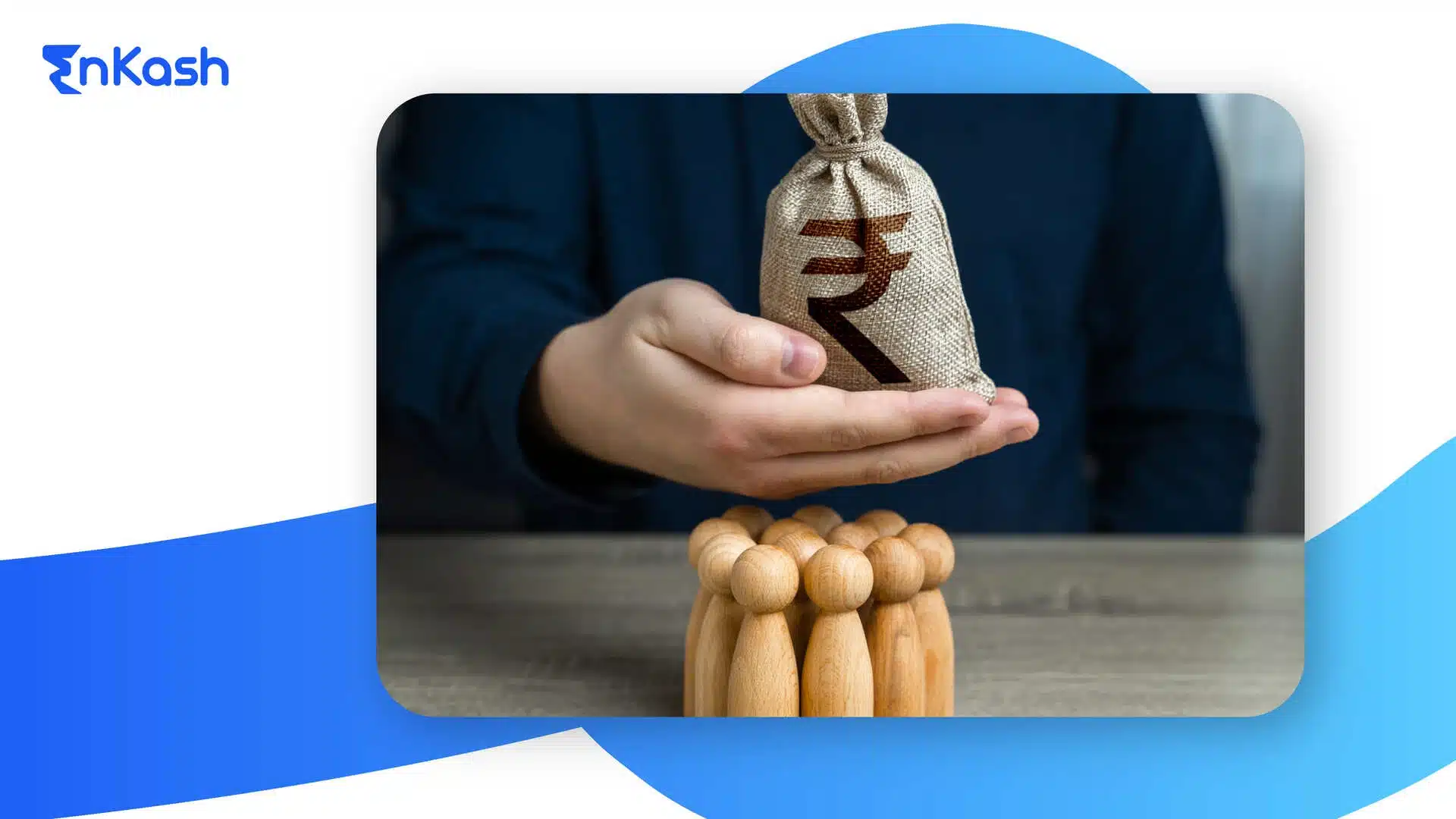Every organization has a leave policy, but not everyone knows what happens to the leaves that remain unused. Leave encashment is a simple way to ensure those days don’t go to waste. In this blog, we’ll walk through the basics of how it’s calculated, when it’s applicable, and what rules apply.
What is Leave Encashment?
Leave encashment means getting paid for the leaves you’ve earned but didn’t use. Every company gives employees a certain number of paid leaves each year. If some of those leaves are left unused, you can choose to encash them, that is, receive money for them.
This usually happens when you leave the company, retire, or at the end of the year, depending on your company’s policy. The amount you get is calculated based on your salary for the number of unused leave days.
In short, leave encashment makes sure your unused leaves don’t go to waste and you’re paid fairly for the time you’ve earned.
Types of Leaves
Every employee is entitled to different kinds of leaves based on company policy and labor laws. Each type serves a different purpose and may or may not be eligible for encashment.
1. Earned Leave (EL) or Privilege Leave (PL)
These are the leaves employees earn for the days they work. They can be carried forward to the next year and are usually eligible for encashment.
2. Casual Leave (CL)
Casual leaves are meant for short, unplanned breaks like personal work or emergencies. They are not carried forward and generally cannot be encashed.
3. Sick Leave (SL)
Sick leaves are given when an employee is unwell or recovering from an illness. Some organizations allow unused sick leaves to be carried forward, but most do not allow encashment.
4. Maternity Leave / Paternity Leave
These leaves are provided during childbirth or adoption. They are mandatory under law for eligible employees, but cannot be encashed.
5. Compensatory Off (Comp-Off)
This leave is given when an employee works on a holiday or is scheduled off weekly. It must be used within a specific period and is not encashable.
How to Calculate Leave Encashment?
The amount you get through leave encashment depends on your basic salary and the number of unused paid leaves you have.
Most companies calculate it using a simple formula:
Leave Encashment = (Basic Salary ÷ 30) × Number of Unused Earned Leaves
Let’s understand this with an example:
Monthly basic salary = ₹30,000
Unused earned leaves = 10 days
Leave encashment = (30,000 ÷ 30) × 10 = ₹10,000
This means the employee will receive ₹10,000 as leave encashment.
Some organizations may also include other salary components like Dearness Allowance (DA) or commission, depending on their policy.
Read more: Expense management software
Eligibility for Leave Encashment
Let’s look at the factors in detail that determine the eligibility for leave encashment.
Employment Tenure
Usually, companies expect employees to complete a minimum service period before they can encash their leaves. For instance, employees can encash leaves after they have been with the company for a year or after several years, based on the organization’s policy.
Employees may be allowed to encash their leaves during their employment, or some companies may allow encashment only at the time of resignation or retirement.
Company Policies
Whether employees can encash leaves and which types of leaves are encashable depend on the internal policy guidelines of the company. . While some companies allow EL encashment, others specify certain leaves that can be encashed such as sick or holiday leave. Further, companies could fix an overall limit on the maximum number of encashable leaves.
Employment Type
An individual’s entitlement to leave encashment is also determined by whether they work in the public or private sector.
- Government Employees: They can encash up to a maximum of 300 days of earned leave at retirement, and the amount received is fully exempt from income tax under Section 10(10AA) of the Income Tax Act, subject to eligibility..
- Private Sector Employees: The number of leaves they can encash is decided by company policy and the amount they receive is partially exempted from tax.
Retirement or Separation
When an employee retires or separates from service, they may encash the accumulated leaves. If an employee resigns, some organizations may have conditions, such as serving a certain notice period before encashment can be allowed.
Legal Heirs of Deceased Employees
In case of an employee’s demise, legal heirs are entitled to receive leave encashment as per company policy or service rules. For government employees, the amount is fully exempt. For private employees, taxation depends on specific employer policy and applicable tax provisions.
Read more: Gift cards
Leave Encashment Rules
Leave encashment is guided by both company policy and the Income Tax Act, 1961 mainly Section 10(10AA), which explains how leave salary is taxed and when it qualifies for exemption. These rules ensure employees receive fair value for their unused earned leaves while keeping the process compliant and transparent.
1. Eligibility
- Only earned or privilege leaves are eligible for encashment.
- Casual, sick, or maternity leaves usually cannot be encashed or claimed as a deduction.
- The leave encashment meaning and process may vary slightly from one organization to another.
2. When Leave Encashment Is Paid
Leave encashment can be paid at different stages depending on the company policy:
- At retirement or resignation (full and final settlement)
- At the end of a financial year, if allowed by the employer
- When the leave balance crosses a set limit, leading to automatic encashment
The amount is calculated using a standard leave encashment formula based on the employee’s basic salary and the number of unused earned leaves.
3. Taxation and Exemption Rules
- For Government Employees
The entire amount received as leave encashment is fully exempt from income tax. - For Non-Government Employees
The leave encashment exemption under Section 10(10AA) applies up to a certain limit.
The exempted amount is the least of the following:
- Actual leave encashment received
- ₹25,00,000 (leave encashment limit for exemption)
- 10 months’ average salary
- Value of unutilized earned leaves (maximum 30 days per year of service)
Any amount exceeding the exempted limit is taxable as per the employee’s income slab.
4. Salary Components Considered
The leave encashment calculation is based on basic salary + dearness allowance (DA), not the total CTC.
Companies may use either 30 days or 26 working days as the base for the monthly salary, depending on policy.
5. Link Between Gratuity and Leave Encashment
Leave encashment often comes along with other retirement benefits like gratuity.
While gratuity taxation follows its own rules, both gratuity and leave encashment tax benefits help employees reduce their tax burden during retirement or exit.
Let’s consider Mr. B, a private-sector employee retiring after 20 years of employment. He has 325 days of unused earned leaves. His monthly salary and DA come up to ₹30,000. As per the above formula, he gets ₹3,25,000 as leave encashment.
Here is how the leave encashment amount will be taxed.
- Leave Encashment Received: ₹3,25,500
- Average Salary of 10 Months: ₹30,000 * 10 = ₹3,00,000
- Cash Equivalent of Unused Leave: ₹1,000 * 325 = ₹3,25,000
- Statutory Limit: ₹25,00,000
₹3,00,000 is the least of the amounts mentioned, so ₹3,00,000 is exempt, and ₹25,000 is taxable as part of Mr B’s salary income.
Read more: Payroll processing
What is the Process of Leave Encashment?
The process of leave encashment can be different based on company rules and local labor laws. Let’s look at some of the important steps in the general leave encashment process.
Accumulate Unused Leaves
Employees accumulate earned or privileged leave during their tenure. These leaves can be encashed at the time of resignation or retirement and, in some cases, during employment as well.
Request for Leave Encashment
Employees can encash their unused leaves upon resignation, retirement, or during employment, if permitted by company policy. Employees can start the process of leave encashment by sending an application to HR or filling out an encashment leave form.
Assess Leave Balance
Once the request to encash leave is initiated, the HR or finance team calculates the number of eligible leave days that can be encashed. Factors such as employee tenure and limits on number of leaves that can be encashed are considered.
Calculate Leave Encashment Value
The company then calculates the leave encashment value. The general formula used for this calculation is:
Leave Encashment = (Basic Salary + Dearness Allowance) / 30 × Number of Earned Leaves
The formula may be altered depending on salary components and the structure of the company.
Approval from HR/Management
The leave encashment request and payout will be verified and approved by the responsible authorities. This is done to ensure the request meets corporate policies and the balances are correctly assessed.
Leave Encashment Payout
If the employee has retired or resigned, the leave encashment payout will be made as part of their final settlement. If the request is made during service, the payout will be made depending on the company policy and taxation rules.
Tax Deductions
The leave encashment payout will be taxed depending on employment type and whether the encashment is during employment or retirement. For private-sector employees, only a part of their payout is exempted from tax, and the remaining balance will be taxed as salary income. For leaves encashed during tenure, employees can fill out Form 10E under Section 89 for tax relief.
Benefits of Leave Encashment
Leave encashment rules work well for employees and employers, let’s look at some of their benefits:
Benefits for Employees
- Financial Flexibility: Employees are paid the cash equivalent of their unused leaves. The payout can provide them with a financial cushion during their resignation or retirement period.
- Retirement Planning: The additional cash payout can help employees start their retirement on a positive note. The money can go towards investments or interests or act as a supplementary income source.
- Tax Savings: The amount received for leave encashment is tax-exempt for government employees and partially tax-exempt for private-sector employees. This helps reduce the overall tax liabilities.
Benefits for Employer
- Increased Productivity: Allowing employees to convert their leaves into money increases the number of productive man-days.
- Cost Management: Leave encashment provides transparency on how employers manage employee benefits. Companies prefer managing the expense rather than dealing with frequent absences..
Read more: Cost Control
Conclusion
Encashing leaves is a method of salary compensation offered by organizations whereby employees receive payment for a defined number of unutilized leaves in a year. The norms differ for government employees and those in the private sector. However, the policy allows employees the flexibility of utilizing their unused leave to plan for retirement or meet financial requirements during their employment period. Understanding the concepts around leave encashment can help employees utilize their benefits while reducing taxes.
FAQs
1. What is leave encashment?
Leave encashment means getting paid for your unused earned leave. It ensures employees are compensated for the leaves they couldn’t take during their service.
2. Is leave encashment taxable?
Yes, it can be taxable.
- For government employees, it’s fully exempt from income tax.
- For private employees, it’s partly exempt under Section 10(10AA) of the Income Tax Act, depending on the exemption limit.
3. What is the exemption limit for leave encashment?
As per the latest rules, the maximum exemption limit for non-government employees is ₹25,00,000. Any amount above this limit is taxable.
4. How is leave encashment calculated?
It’s usually based on your basic salary + dearness allowance (if applicable) and the number of unused earned leaves.
Formula:
(Basic Salary + DA) ÷ 30 × No. of Unused Earned Leaves
5. What is Section 10(10AA) of the Income Tax Act?
Section 10(10AA) defines the rules for leave encashment exemption and taxation in India. It specifies how much of the amount received is tax-free for both government and non-government employees.
6. Is gratuity taxable like leave encashment?
Both gratuity and leave encashment offer tax benefits under different sections of the Income Tax Act. Gratuity is partly exempt under Section 10(10), while leave encashment exemption falls under Section 10(10AA).
7. When is leave encashment paid?
Leave encashment is generally paid:
- At the time of retirement or resignation
- During annual settlements (if allowed by company policy)
When the leave balance exceeds a certain limit set by the organization
8. Can sick or casual leaves be encashed?
No. Usually, only earned or privileged leaves can be encashed. Sick and casual leaves are not eligible for encashment.
9. What is the leave encashment limit on retirement?
At the time of retirement, the leave encashment limit for non-government employees is ₹25,00,000, while for government employees it is fully exempt, regardless of the amount received.
10. What is the benefit of leave encashment?
Leave encashment ensures employees don’t lose the monetary value of their unused leave. It acts as a financial benefit during service, resignation, or retirement, offering both cash value and tax relief within the exemption limits.








